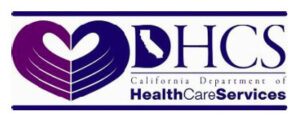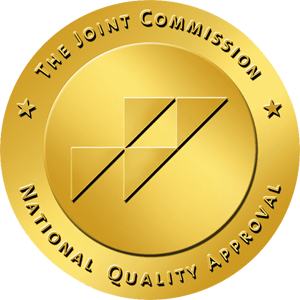Drug rehabilitation marks a transformative journey for individuals seeking to break free from addiction. Whether you’re entering rehab for yourself or supporting a loved one, understanding what lies ahead helps ease anxiety and sets realistic expectations. This process involves physical, emotional, and psychological shifts, all aimed at fostering lasting recovery. Below, we explore the stages, experiences, and outcomes you can anticipate during drug rehabilitation.
Initial Assessment and Detoxification
Your journey in drug rehabilitation begins with a thorough assessment. Professionals, including doctors and therapists, evaluate your physical health, substance use history, and mental well-being. They ask questions about your drug habits, lifestyle, and any co-occurring conditions like anxiety or depression. This step ensures a tailored treatment plan that addresses your unique needs.
Following the assessment, most individuals enter detoxification, or detox. Detox rids your body of harmful substances under medical supervision. You may experience withdrawal symptoms—ranging from mild discomfort like sweating and nausea to severe reactions like seizures—depending on the drug and usage duration. Medical staff monitor you closely, offering medications when necessary to manage pain or cravings. Detox typically lasts three to seven days, though timelines vary. Expect this phase to challenge you physically, but know it prepares your body for the healing ahead.
Structured Daily Routine
Once detox concludes, you dive into the core of drug rehabilitation: a structured program. Rehab facilities, whether inpatient or outpatient, prioritize consistency. You wake up at a set time, participate in therapy sessions, eat balanced meals, and engage in physical activities. This routine rebuilds discipline and replaces chaotic patterns tied to addiction.
Expect a mix of individual and group therapy. In one-on-one sessions, you work with a counselor to uncover triggers—emotions, places, or people—that fuel your substance use. You develop coping strategies to handle stress without turning to drugs. Group therapy, meanwhile, connects you with peers facing similar struggles. You share stories, offer support, and realize you’re not alone. These interactions foster accountability and build a sense of community, critical for long-term sobriety.
Emotional and Psychological Challenges
Drug rehabilitation doesn’t just heal your body; it rewires your mind. You confront deep emotions—guilt, shame, or anger—that may have driven your addiction. Therapists guide you through cognitive behavioral therapy (CBT) or dialectical behavior therapy (DBT) to reshape negative thought patterns. Expect moments of frustration as you unravel years of habits, but embrace these breakthroughs as steps toward freedom.
You might also encounter family therapy. Addiction often strains relationships, and rehab offers a chance to mend them. Your loved ones join sessions to express their feelings, learn about addiction, and rebuild trust. These conversations spark vulnerability but pave the way for stronger bonds post-rehab.
Skill-Building and Holistic Activities
Rehab equips you with tools for life beyond treatment. You attend workshops on stress management, communication, and job readiness. Staff teach you practical skills—like budgeting or cooking—to ease your transition back into daily life. These lessons empower you to thrive without relying on substances.
Many programs incorporate holistic treatments, too. You might try yoga, meditation, or art therapy to reconnect with your body and mind. These activities reduce anxiety, boost self-esteem, and uncover new passions. Expect to discover strengths you didn’t know you had, as rehab nurtures both recovery and personal growth.
Relapse Prevention Planning
As your program nears its end, you focus on staying sober. Counselors help you craft a relapse prevention plan. You identify high-risk situations—like parties or stressful days—and brainstorm ways to navigate them. You practice saying “no” and build a support network of friends, family, or sober sponsors. Expect this phase to feel empowering as you take ownership of your future.
Transitioning Out of Rehab
Leaving drug rehabilitation doesn’t mean the journey ends—it evolves. You may step down to outpatient care, attending therapy a few times a week while resuming work or school. Alternatively, you might join a sober living home, where you live with others in recovery under light supervision. Expect this shift to test your resilience. Temptations lurk, but the skills you’ve gained help you stay on track.
You also connect with aftercare resources, like 12-step programs (e.g., Alcoholics Anonymous or Narcotics Anonymous) or alumni groups. These communities offer ongoing encouragement and accountability. Expect to feel a mix of pride and nervousness as you reenter the world, but trust that rehab has armed you with the strength to succeed.
Physical and Mental Transformation
Throughout drug rehabilitation, your body heals. You regain energy, sleep better, and notice clearer skin or brighter eyes. Mentally, you experience sharper focus and renewed motivation. Expect these changes to unfold gradually—recovery takes time—but celebrate them as proof of progress.
What Success Looks Like
Success in drug rehabilitation varies. For some, it means total abstinence; for others, it’s harm reduction. You define your goals with your treatment team early on. Expect setbacks—cravings or slips might happen—but view them as learning opportunities, not failures. Rehab teaches you resilience, ensuring you bounce back stronger.
Final Thoughts
Drug rehabilitation offers a structured, supportive path to reclaim your life. You face detox, therapy, and skill-building, all while tackling emotional hurdles. Expect challenges, but anticipate growth, too. With commitment and the right resources, you emerge equipped to live soberly and confidently. If you or someone you love considers rehab, take the leap—it’s a step toward a healthier, happier future.






